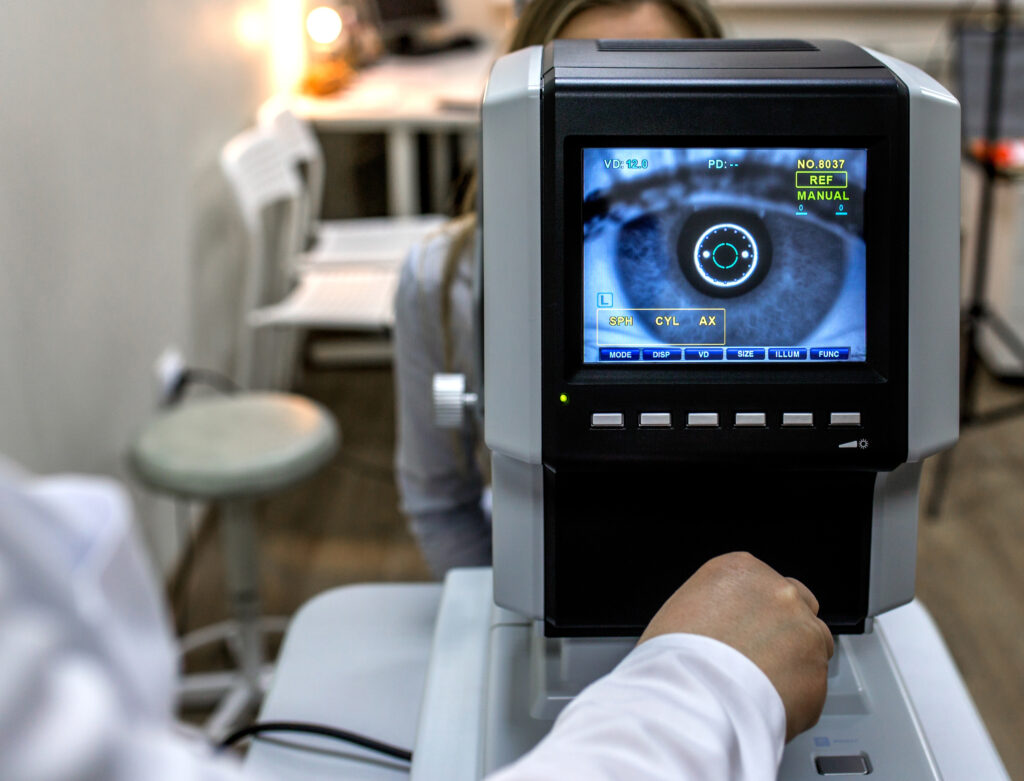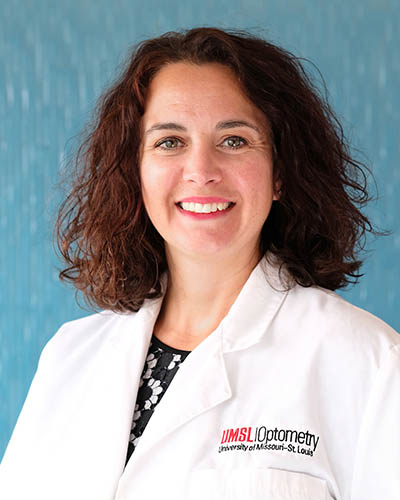by Veronica Tkaczyk and Sarah Stith
Being an optometrist presents a wide range of specialty areas to consider, each with its own opportunities and challenges. With so many paths to explore, it is important to take the time to learn about the different options and how they can shape your professional journey and patient care. From contact lens to ocular disease management and vision therapy, each specialty serves a distinct role in patient care. Gaining insight into these areas not only helps in finding a personal fit but also ensures that you can provide the most comprehensive care for your patients. Let’s take a closer look at some of these specialties and the unique contributions they offer to the field of optometry.

Geriatric and low-vision optometry focuses on addressing and treating the unique vision challenges faced by older adults, such as cataracts, glaucoma and macular degeneration or anyone who does not meet the criteria of BCVA 20/200 and field of less than 20 degrees. Optometrists play a crucial role in managing the vision changes that individuals experience as they age, improving quality of life and helping patients maintain independence. Kathleen Boland, O.D., is the coordinator for the courses in low vision rehabilitation and geriatrics at the University of Missouri St. Louis College of Optometry. She works in the low-vision clinic and is involved with a nonprofit in town, The St. Louis Society for the Blind and Visually Impaired. She evaluates her patients with low vision to see how they are functioning day to day and discusses with them alternative methods of treatment that will help them with their concerns. Some treatments include magnifiers and non-optical aids, working closely with other health care providers to offer comprehensive care and support. When talking to Dr. Boland, she exclaimed, “The best part of low-vision care is seeing a client meet one of their goals of something they previously found difficult and are now able to do it with tricks and tools”.
The contact lens specialty focuses on fitting and prescribing lenses for a wide range of visual needs, from routine correction to more complex cases such as keratoconus, astigmatism, and post-surgical care. In an interview with Julie DeKinder, O.D., F.A.A.O., she gave some insights into her experiences with the specialty. At the University of Missouri St. Louis College of Optometry, Dr. DeKinder serves as associate dean of academic programs and is the director of residency programs. She teaches contact lens courses, works and helps students in contact lens clinic, and conducts contact lens research with residents and students. In the world of contact lenses, there are a variety of lenses to choose from. You have soft contact lenses, lenses for astigmatism, and multifocal lenses. You also have contact lenses for keratoconus and specialty contact lens fittings, such as your gas permeable lenses, scleral lenses and hybrid lens. Another area that contact lens explores is myopia management. With myopia’s increasing prevalence in our society’s youth, contact lens specialists are finding ways to curb the rising numbers through contact lens care.


Ocular disease is a critical specialization in optometry as doctors work in the early detection, diagnosis and treatment of various conditions. The most common cases include macular degeneration, dry eye disease, and diabetic retinopathy. The Atwater Eye Care Center at Indiana University School of Optometry is equipped with the necessary instruments that aid in the most accurate diagnosis for the root cause of patient symptoms. Dry eye specialists at the IU Dry Eye Clinic use state-of-the-art technology and testing including Keratograph 5M, LipiView II, TearLab Osmolarity, InflammaDry to diagnose and monitor specific ocular surface conditions. Advanced care for complex eye conditions includes the use of modern technologies to evaluate glaucoma, cataracts, infections and hypertensive disease as well. Facilities specializing in ocular disease also provide pre- and post-operative care to patients after cataract, laser, and other surgeries.
Another specialty that optometry has to offer is pediatrics and vision therapy. Pediatric optometry focuses on the eye health and visual development of children, focusing on issues such as nearsightedness, farsightedness and eye coordination problems. Early detection and treatment are key for conditions such as amblyopia or strabismus, which can affect a children’s learning and development. To treat these issues, vision therapy is the most common mode of treatment. This includes exercises and activities to improve eye tracking, focusing and coordination. Aaron Franzel, O.D., started his academic career with an interest in the familial tendencies for esotropia and investigating non-strabismic binocular anomalies of their siblings. He is a major advocate for kids who have visual processing deficits that are, for some, a chief contributing factor to dyslexia. His research evaluates all known processing anomalies that are known to contribute to dyslexia and dysgraphia. He and his team evaluate traditional visual perceptual and visual-motor skill, but also extend their testing to include processing of sounds and the match to the letters that represent them. They also serve as an advocate for parents to ensure appropriate services and accommodations are offered. Dr. Franzel and other pediatric optometrists work closely with children and their families to ensure healthy visual growth and provide personalized care that supports their academic and overall development.

As explored, optometry encompasses various specialties that focus on different aspects of eye care and vision health. Other key areas of study include general practice optometry, sports vision, and refractive surgery. Residencies are available for further exploring any specialty that interests you in school. Specializing further allows optometrists to provide comprehensive care tailored to specific patient needs.

